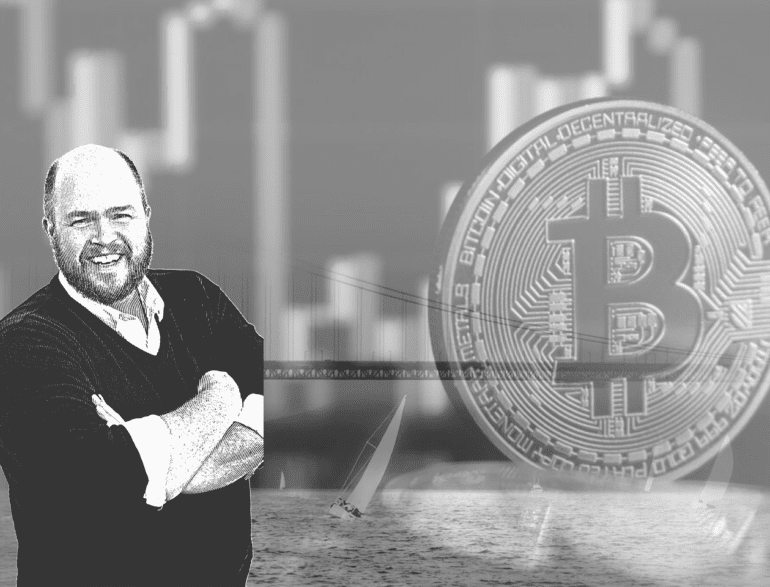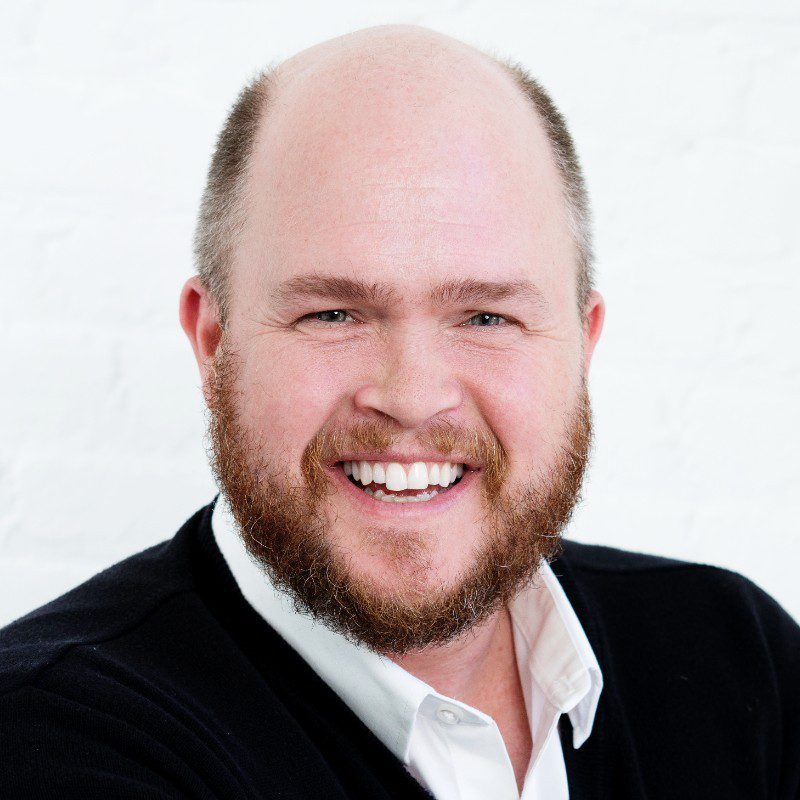Talking about Web3 investing went from a niche topic to a crazy idea very quickly this fall. But in the face of industry calamity, one B2B Venture Capital firm is still excited about a blockchain tech revolution.
General Partner Peter Ackerson said Fin Captial is a results-based tech B2B VC shop that rewards long-term durable tech building with actual revenue behind it.
“In terms of Fin, we’ve always been focused from day one on B2B businesses because they are more durable,” Ackerson said. “They tend to look more like work, and projects that look more like work and less like magic tend to be solid investments where you can lean into, build, and know that you’re going to get strong returns.”
Though in the current cycle, he said even the most careful are in trouble for their proximity to worse actors. It comes not to the technology he believes has real merit but the ideology and rewards structure of an industrial shift.
“When you get rewarded for raising capital and then spending it quickly, people tend to do more of that; when you get rewarded for building deep tech or durable tech and financing your growth through revenue-generating customers, you do that instead?”
A lifetime of tech, fin, and consulting
With time at Merrill Lynch, McKinsey, and Symphony AI, Ackerson said his career was split into thirds of banking, consulting, and entrepreneurship before landing a spot as an investor. When founder Logan Allin invited him on shortly after launching in 2019, he was excited to join the fintech space he knew from Symphony and working near SoFi.
“I was interested in the ability to build a strategy in which you collaborate deeply with entrepreneurs; we like to partner with entrepreneurs as tech specialists that focus on B2B, know what they’re building to get alignment on our diligence process, and what we can contribute to that effort across our network.”
Fin Capital now has 110 portfolio companies, with slightly over a billion in AUM, Ackerson said, and “it has been a fantastic ride.”
He said Fin looks at repeat entrepreneurs with a favored eye because they have already proven themselves.
“We invest in repeat entrepreneurs, and that’s because they are far more likely to be effective. And the larger the endeavor, the more important the leadership, teamwork, and expertise; we’ve backed some of the most impressive innovators in the industry,” he said.
“Folks like Jeremy Allaire at Circle and Mike Cagney at Figure, who’s building securitization on the blockchain and previously founded SoFi. Peter Hazelhurst, at Synctera, who ran global payments at Uber and built the Google Wallet.”
He said these people know what their doing and still make mistakes because everyone does, but they know how to handle the scale of their operations as they grow.
We never really learn
Even after millennia of history to learn from, when new technology comes out, human beings forget everything, Ackerson said. With new words and new things on the horizon, matched with raising returns, he said the classic human nature to grab anything not nailed down kicks in, and the reasons why we have regulations in the first place become ever apparent.
“It starts with a new vocabulary. All of a sudden, people think this is a different thing because it has a different vocabulary associated with it. And then it accelerates because people get sucked in by that vocabulary and think, ‘I want to pour money and gasoline onto this bonfire.’ And then it explodes.'”
He said that consumer-facing businesses tend to chase the trends of the time, another reason Fin Capital looks toward institutional firms. Some companies do it very well, but it is hard to survive.
“Consumer businesses across the board tend to be largely fashion businesses,” he said. “And fashion, I think we can all admit, has never been one of my strong suits. You go bald early, and you learn where you’re going to play and where you’re not going to play.”
In the case of FTX, it is a straightforward wealth transfer exercise, a blockbuster for swapping coins that were not built to last.
“These guys they built did not build highly optimized businesses and strategies that could take a bump or hit a pothole, and they just blow up because they were never built for durability. They were built for extreme performance,” Ackerson said.
“We know we’re prone to excess and hyperbole; we’re prone to crime, candidly, and to nefarious behaviors: these are known things,” Ackerson said. “There’s a whole infrastructure to protect consumers and businesses from this is called regulators. People get pissed about them, but they exist because we’ve learned lessons throughout multiple cycles.”
‘Let’s write that down and not do it again.’
It takes a five to 10-year investment to build something durable, Ackerson said
“We like to sit deeply in partnership with our companies, which means that we’re happy to patient capital,” Ackerson said.
In 2022, going into 2023, durability in Web3 means a renewed focus on performance, transparency, and governance, Ackerson said.
“Are things built for performance and specifically durable performance persistent? Is there transparency in business economics, both at the unit level and overall? And what is governance? We’re seeing many examples of how those fell apart,” he said.
“And what’s fascinating about Web3 and asking your questions like how did we end up here? I believe it starts with nomenclature at a fundamental level.”
Words like AI and machine learning and their use can indicate if the product is technological or magical, Ackerson said.
“It matters whether you refer to something as machine learning or artificial intelligence. Machine learning is a piece of technology. Artificial Intelligence lends you very quickly into science fiction and killer robots,” he said. “Likewise, it matters whether you think first blockchain and distributed enterprise technologies or if you go more immediately towards crypto web three in sort of the nomenclature of the future.”
When the rewards system feedback loop supports marketing and spending, the industry reaps nondurable rewards, Ackerson said.
“When you get rewarded for raising capital and then spending it quickly, people tend to do more of that; when you get rewarded for building deep tech or durable tech and financing your growth through revenue-generating customers, do you do that instead?”
VC is not mentorship; it’s sharing the load
“Venture is sort of like the movie business. There are many different ways to make movies, and they all can be good movies. But Tarantino will never make a Spielberg movie and vice versa,” Ackerson said.
“There’s a lot of ways to be a venture investor. What we do is what makes sense to us: We spend a lot of time on diligence, and diligence is not simply Is this a good investment? We are looking to partner actively with these guys.”
It’s not a top-down hand-holding, Ackerson said.
“It’s looking at a team ready to climb a mountain and thinking about the trek. It’s a collaboration, an invitation to the Fin Capital circle and experts we can count on to help new companies. When they offer term sheets, they provide a connection for people on the team that can help. It’s not about changing things. It’s about getting engaged.”
“Is it the right team? Is it the right mountain? And most importantly for us, how much of the equipment can we help carry up the hill?” Ackerson said.
FTX and SBF were the opposite of a Fin Capital investment
FTX was a perfect example of a business model not made for growth, he said, financed with scale and new capital rather than customers.
Investors have to take a step back and ask what an entirely new asset class means, and whether an actor like FTX matters in this phase of the cycle: is it a solution or another in a long line of bubble makers, Ackerson wondered.
“What did we know from hundreds of years of human behavior about market behavior and more familiar human behaviors? Because it turns out that some percentage of people, particularly in a bubble and frothy markets, will cheat. We all get reminded of the lessons and move through them,” Ackerson said.
In the fallout of a frothy market, real investors and businesses are stuck comingled with people who never intended to do anything right, Ackerson said. Despite the Schadenfreude, he doesn’t want to celebrate other people’s downfalls, especially knowing what it feels like to pour a heart and soul into something.
“There’s real catastrophic consequences for pension funds for venture funds for other entrepreneurs who build on top of their stack. For somebody to come out and say, I don’t know where $10 billion went, is mind-boggling to me. I’ve got kids, and they teach him early in Kindergarten. You don’t just say I’m sorry. You say what can I do to fix it? And in this instance, there’s nothing he can do.”
His advice to SBF: get a lawyer and stop appearing in public.
“You should not be on camera. I get why the journalists are doing a great story. And you know, we’re all waiting for Michael Lewis, who seems to have just an unbelievable uncanny ability. How does he get in the right place at the right time?”
2023 looks bullish for blockchain
“I’m hugely bullish on it. Hugely,” Ackerson said about the future of blockchain tech.
He said that the world is still early in understanding and building in this category’s macro and market context. To this day, there are massive companies still built on mobile tech; he said, 15-year-old technology.
“These waves take time to play out, and we are very early in this one. I believe fundamentally; blockchain is a significant technology with benefits vastly superior to the existing infrastructure,” Ackerson said.
“We will see hundreds of billions of value created in this space over the next decade. Blockchain is for the builders. And the BS artists in the speculators are getting out of the market because they got burned badly.”



